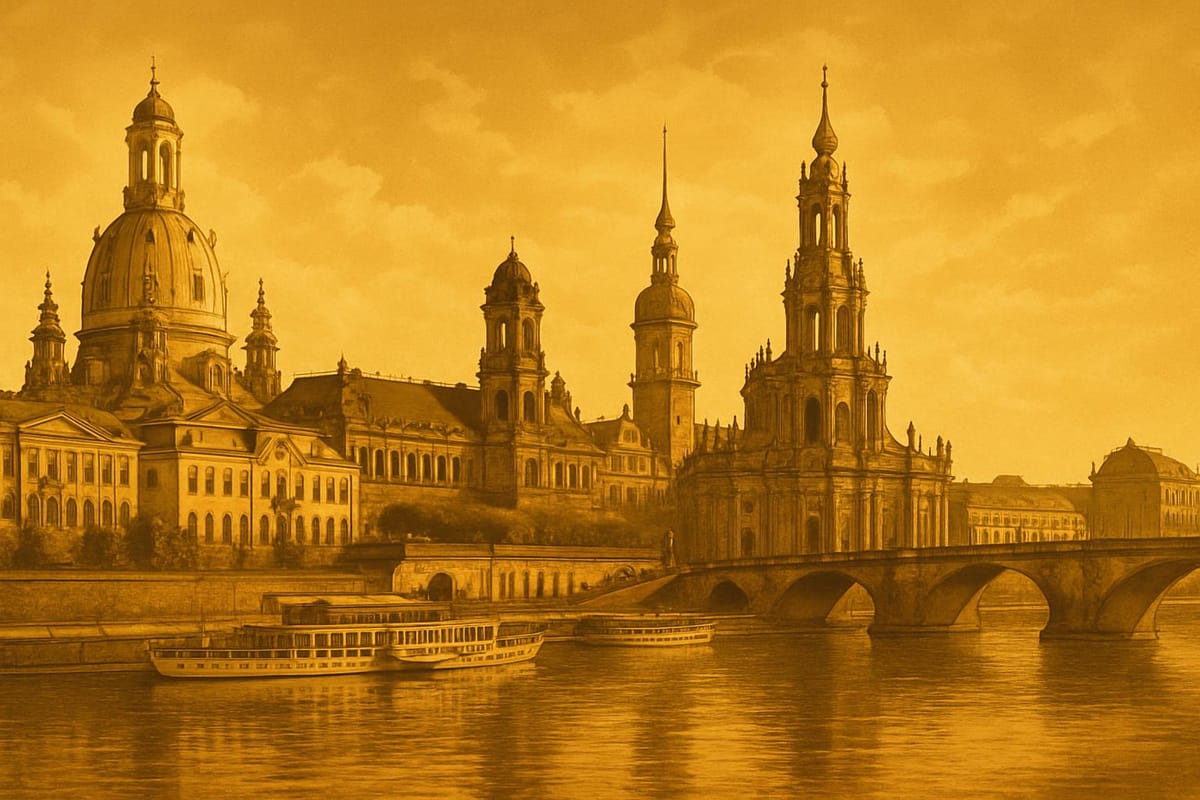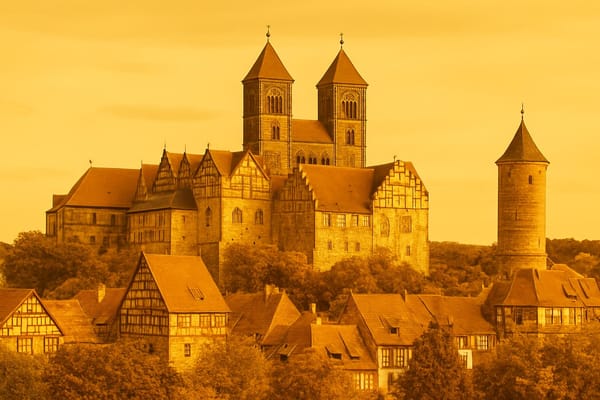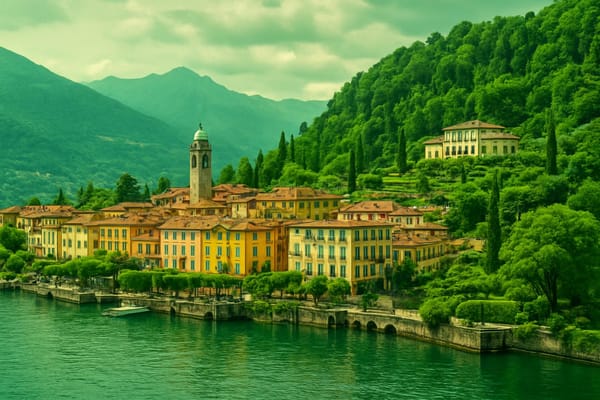Dresden
Discover Baroque architecture, Frauenkirche, Zwinger art, museums & Elbe river views.

Important things to know about Dresden
Dresden, a vibrant city in Germany, sits gracefully along the winding Elbe and combines deep historical roots with a forward-looking spirit; as the capital of Saxony, Dresden is known for its resilience, having rebuilt much of its urban fabric after the devastation of war, and today it projects an image of cultural richness, academic strength and economic dynamism. The city’s identity is shaped by a mix of architecture from different eras, lively neighborhoods where creative industries and startups flourish, and an academic community anchored by universities and research institutes that drive innovation in microelectronics, materials science and the digital economy. Residents and newcomers alike appreciate Dresden’s compact scale, efficient public transport, and extensive green spaces that make outdoor life along the riverbanks and urban parks a regular part of daily routine; culinary offerings range from traditional Saxon fare to international dining, reflecting a cosmopolitan population and a welcoming atmosphere. Dresden’s local economy balances manufacturing and high-tech sectors with a growing service and cultural economy, creating employment opportunities while maintaining a strong sense of local craftsmanship and pride. Seasonal markets, community festivals and a lively arts scene contribute to a diverse social fabric, while careful urban planning and conservation efforts strive to harmonize new development with the city’s historical character. For anyone interested in a German city that blends tradition, innovation, and a high quality of life, Dresden offers a compelling mix of educational resources, economic prospects, and a picturesque setting on the Elbe that continues to shape its contemporary evolution.
Sightseeing hot-spots in Dresden
Dresden is a jewel of baroque architecture and a top destination for sightseeing in Germany, set gracefully along the banks of the Elbe River. Visitors arriving in the Altstadt are immediately struck by the reconstructed splendor of the Frauenkirche, whose dome defines the skyline and invites contemplation and panoramic views. Nearby, the ornate pavilions of the Zwinger host world-class collections and lush courtyards that epitomize Dresden’s artistic legacy. Walking from the historic squares to the riverfront, you’ll pass the imposing Semperoper, a magnificent opera house known for its acoustics and repertoire, and feel why Dresden remains a magnet for travelers seeking culture and visual grandeur.
The city’s museums are must-see attractions for anyone planning things to do in Dresden, with treasures ranging from royal regalia to Old Masters paintings. The Green Vault inside the Dresden Royal Palace displays extraordinary examples of craftsmanship and is often cited among Europe’s richest museum collections. Art lovers should not miss the Gemäldegalerie Alte Meister for masterpieces that span centuries. For more leisurely sightseeing, stroll along Brühl’s Terrace-the so-called “Balcony of Europe”-or enjoy a scenic Elbe river cruise that frames the city’s silhouette. These experiences combine to make Dresden an essential stop on any cultural itinerary through Saxony.
To make the most of a visit, consider timing your trip to coincide with spring or early autumn when the light highlights the city’s façades without the summer crowds, and check local listings for concerts at the Semperoper or festivals along the river. Public transport and compact city center planning make it easy to cover the main Dresden attractions on foot, while day trips to nearby Saxon Switzerland offer dramatic natural contrasts. Whether your interest is history, art, or simply picturesque urban landscapes, a journey to Dresden promises memorable sightseeing and abundant photo opportunities.
Hotels to enjoy in Dresden
Dresden, Germany, offers a rich selection of hotels in Dresden that cater to every traveler's needs, from historic boutique properties near the Zwinger to modern riverside stays along the Elbe River. Visitors searching for central Dresden hotels will find options within walking distance of the Semperoper, the Altstadt, and renowned museums, making sightseeing effortless. Many accommodations blend restored Baroque architecture with contemporary comforts, giving guests a chance to experience the city's cultural revival while enjoying amenities like high-speed Wi-Fi, spa facilities, and panoramic views of the skyline. Whether you prioritize a romantic getaway, family-friendly services, or business-ready conference rooms, the city’s hotel offerings reflect a balance of luxury, comfort, and authentic local character that appeals to international tourists and domestic travelers alike.
Choosing the right hotel in Dresden is easier when you consider location, budget, and the type of experience you want; panoramic riverfront hotels attract those seeking scenic strolls, while compact boutique hotels in the Neustadt area appeal to artsy visitors looking for nightlife and galleries. For SEO-conscious travelers researching “best hotels in Dresden” or “affordable accommodation Dresden,” look for properties highlighting free breakfast, proximity to Hauptbahnhof, and eco-friendly practices. Booking during shoulder seasons can provide better rates and quieter streets, allowing you to enjoy major attractions without the crowds. With a variety of exceptional Dresden hotels to choose from, planning ahead ensures a memorable stay that combines historical charm with modern convenience.
Restaurants to try in Dresden
Dresden is a city where history meets culinary innovation, and the restaurants of Dresden, Germany reflect that blend with an array of choices from cozy taverns to sleek fine dining establishments. In the Altstadt you can find classic Saxon dishes and elegant dining rooms that pair traditional Sächsische Küche with modern techniques, while the vibrant Neustadt neighborhood pulses with casual bistros, street-food-inspired menus and creative vegetarian and vegan options. Many restaurants in Dresden take advantage of local produce from Saxony, offering seasonal menus that highlight regional ingredients, and several riverside venues along the Elbe provide scenic backdrops for leisurely meals. Whether you are searching for Michelin-caliber experiences, family-friendly cafés, or late-night bites, Dresden’s restaurant scene is diverse and welcoming, making it easy for visitors to discover memorable dining.
For those looking to find the best restaurants in Dresden, focus on a mix of local favorites and newer hotspots that showcase both traditional specialties and contemporary flavors-think hearty potato soups, quark-based desserts like Quarkkeulchen, artisanal sausages, and inventive tasting menus. Reservations are often recommended for popular spots, especially on weekends and during festival seasons, and many venues emphasize sustainable sourcing and regional wines to complement their menus. Food lovers exploring the restaurants of Dresden, Germany will appreciate the balance of authenticity and creativity across price ranges, from affordable lunches to elevated gastronomic evenings, ensuring a satisfying culinary journey in this historic Saxon capital.
Best shopping stops in Dresden
Dresden’s retail scene blends historic charm with contemporary flair, making the shopping highlights of Dresden a must-experience for visitors and locals alike. Strolling down Prager Straße, shoppers find a mix of familiar brands and modern department stores alongside sleek concept shops, while the nearby Altmarkt-Galerie offers a comprehensive one-stop destination for fashion, electronics, and gourmet treats. In the Altstadt, narrow streets reveal artisanal boutiques where Porcelain and hand-crafted goods reflect Saxony’s long traditions; the balance of international labels and independent designers ensures that shopping in Dresden caters to every taste and budget. From luxury emporiums to hidden ateliers, the city’s retail fabric weaves together cultural heritage and cutting-edge design, making each purchase a part of a memorable urban experience.
Beyond the main thoroughfares, the creative districts and markets deliver unexpected finds that define Dresden shopping for trend-seekers and collectors. The Kunsthofpassage in Neustadt is celebrated for its quirky courtyards, concept stores and local designer shops, while seasonal events such as the Striezelmarkt imbue the city with festive commerce and traditional gifts. Antique lovers will be drawn to charming flea markets and specialist stores offering vintage furniture, porcelain pieces and time-worn curios. Whether you’re hunting for high-end fashion, artisanal souvenirs, or unique homewares, Dresden’s mix of historic marketplaces, contemporary shopping centers and independent boutiques guarantees a rich and varied retail itinerary that highlights both the city’s cultural roots and its modern pulse.
Nightlife highlights in Dresden
Dresden nightlife pulses with a surprising mix of historic charm and modern energy, drawing locals and visitors to vibrant neighborhoods like Neustadt and the Altstadt along the Elbe. Whether you're hunting for cozy cocktail bars with artisanal blends, lively beer halls offering regional brews, or intimate rooms where live music fills the air, the city serves a range of options for every mood. The evenings often begin with sunset strolls by the riverside, followed by tasting seasonal drinks at tucked-away speakeasies or enjoying street-side terraces where DJs and acoustic performers create a laid-back yet exciting atmosphere.
When the night deepens, the scene shifts toward bustling clubs and late-night venues that showcase everything from underground electronic beats to polished jazz sets and cabaret-style performances. Cultural hubs and student-friendly spots ensure an accessible, diverse experience, while open-air summer events and popup parties add spontaneity to the calendar. For visitors looking for the best of Dresden Germany nightlife, timing your night around popular concert nights, club schedules, and riverside gatherings will reveal why the city’s nocturnal scene is both historically resonant and refreshingly contemporary.
Getting around in Dresden
Dresden's airport and train situation is convenient for travelers: Dresden Airport (DRS) sits just outside the city and is linked to the urban network by regular S‑Bahn services, airport shuttles and local buses, making transfer to the city center straightforward and fast; taxis and car rental offer additional flexibility for luggage-heavy trips. The rail backbone is Dresden Hauptbahnhof, a major hub served by ICE and IC long‑distance trains as well as Regional‑Express and S‑Bahn lines, providing reliable connections across Germany and into neighboring countries, including frequent links toward Berlin, Leipzig, Munich and cross‑border services to Prague. Local public transport - trams, buses and S‑Bahn - integrates the airport, Hauptbahnhof and city districts for seamless last‑mile travel, while Deutsche Bahn and regional operators run frequent services ideal for both business and leisure visitors. For anyone planning a trip, the combined airport and rail infrastructure in Dresden delivers efficient intermodal connections, straightforward ticketing options and good accessibility to major tourist sites and business centers, making it an attractive gateway for exploring Saxony and beyond.
Culture must-see's in Dresden
Dresden’s cultural heart is a living tapestry of Baroque elegance and resilient restoration, where landmarks like the Frauenkirche, the ornate Zwinger complex and the luminous façade of the Semperoper define a skyline along the Elbe. Visitors drawn to the city’s museums find world-class treasures in the Green Vault and the Old Masters collections, housed within palaces that mirror centuries of artistic patronage. Walking the historic center, it is easy to sense how Dresden’s architecture and galleries were painstakingly rebuilt, making the experience not only visually stunning but emotionally resonant. The city’s emphasis on heritage conservation and public access to art positions Dresden among Europe’s foremost cultural destinations, offering both ornate historical displays and interpretive exhibitions that speak to modern audiences.
Beyond monumental architecture, the culture highlights of Dresden extend to vibrant contemporary scenes, music, and seasonal traditions that keep the city energetically alive. The Dresden Music Festival and a lively calendar of concerts at the Semperoper showcase classical and modern repertoires, while the annual Striezelmarkt and eclectic events in Neustadt bring local flavor, street art and nightlife into sharp contrast with refined museum spaces. Contemporary galleries, experimental performance venues and craft-focused markets celebrate emerging artists and regional Saxon cuisine, creating a balanced cultural ecosystem. Whether you seek classical masterpieces, avant-garde exhibitions, or festival-driven spectacles, Dresden offers a rich, layered cultural experience that rewards return visits and deeper exploration.
History of Dresden
Dresden's long and layered history reads like a palimpsest of European culture, politics and art, centered on the winding course of the Elbe. What began as a small Slavic settlement evolved into the dynastic seat of the Wettin rulers and later the Electorate and Kingdom of Saxony, giving rise to an extraordinary concentration of Baroque architecture and courtly splendor. In the 17th and 18th centuries the city was transformed by ambitious building programs: the ornate Zwinger palace and the jewel-like Green Vault housed princely collections, while the airy dome of the Frauenkirche became a symbol of Protestant residency and civic identity. The riverside terraces, royal gardens and galleries attracted artists, composers and architects, establishing Dresden as a leading center for music, painting and craftsmanship; this cultural heritage is a cornerstone of any overview of the history of Dresden and continues to drive interest in the city's museums, concerts and historic architecture.
The 20th century brought dramatic rupture and recovery, most notoriously the Bombing of Dresden in February 1945, when wide swathes of the historic center were destroyed and centuries of artistic legacy were reduced to rubble, igniting intense debate about civilian suffering and wartime strategy. Under the German Democratic Republic the city undertook selective rebuilding, but it was the post-reunification era that saw a focused and often internationally supported campaign of reconstruction, culminating in the painstaking restoration of the Frauenkirche, completed in the early 21st century and now a powerful emblem of reconciliation. Today Dresden balances respect for its past with a dynamic present: universities, high-technology research, and cultural festivals contribute to a thriving modern economy, while restored palaces, galleries and riverside promenades attract visitors searching for authentic encounters with the city's resilient spirit. The narrative arc of Dresden - from Slavic beginnings through baroque brilliance, wartime devastation and careful rebuilding - remains a compelling chapter in German and European history, illustrating how a city can both conserve memory and reinvent itself for new generations.



